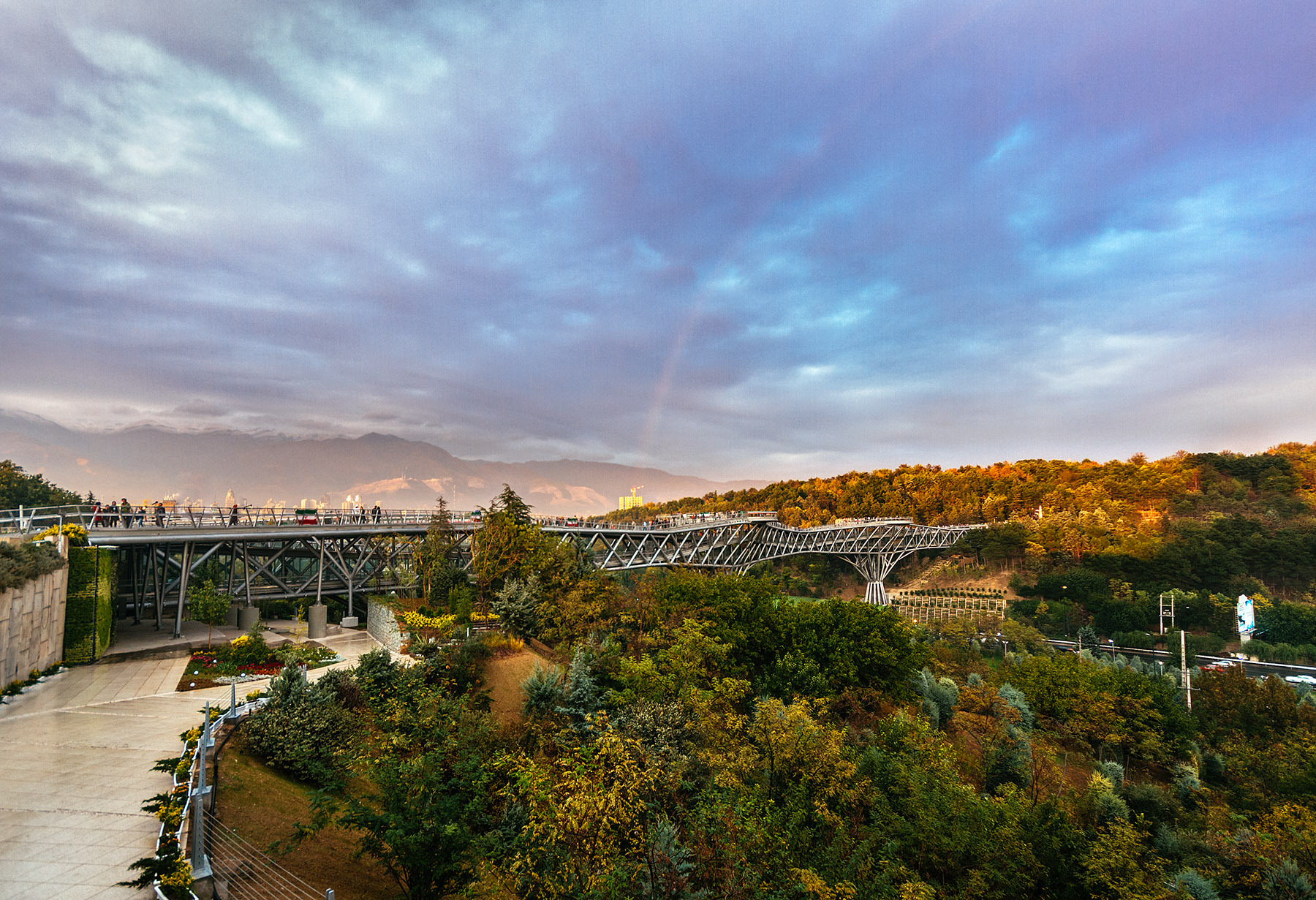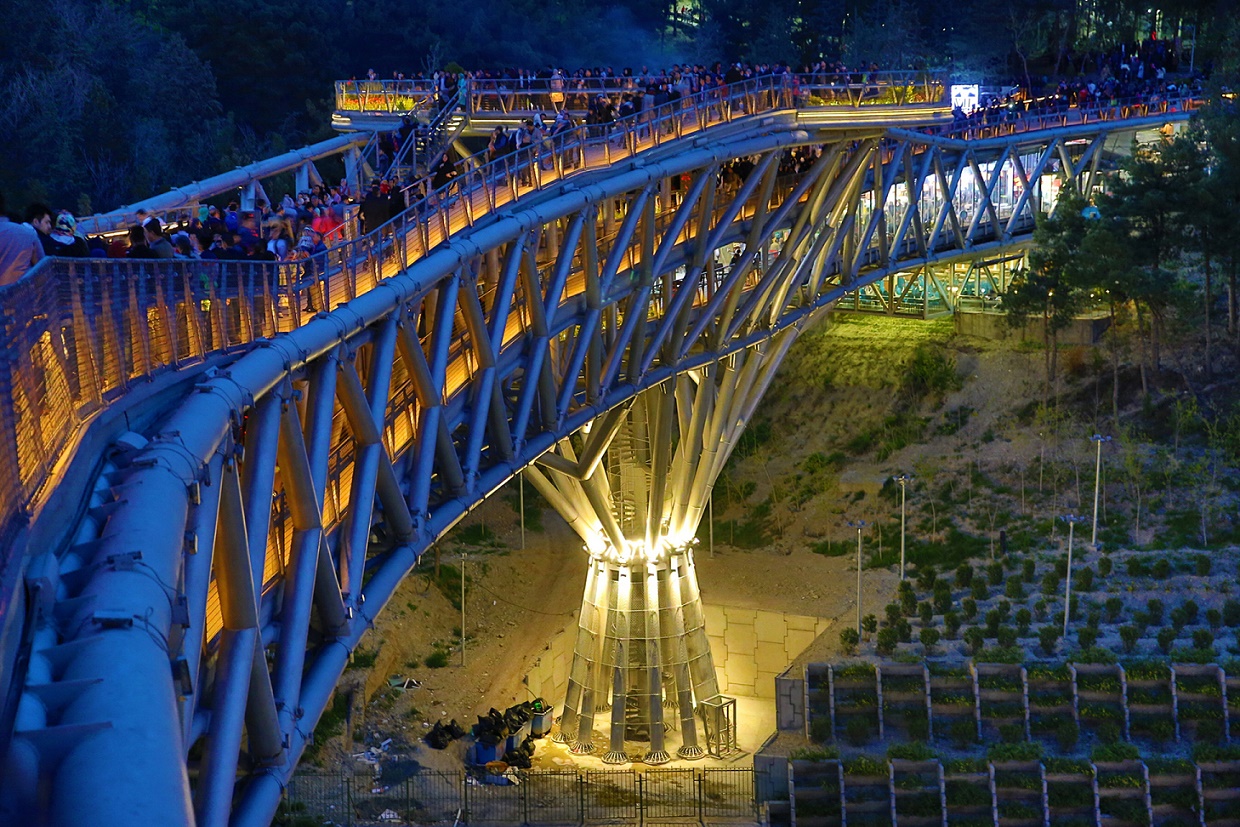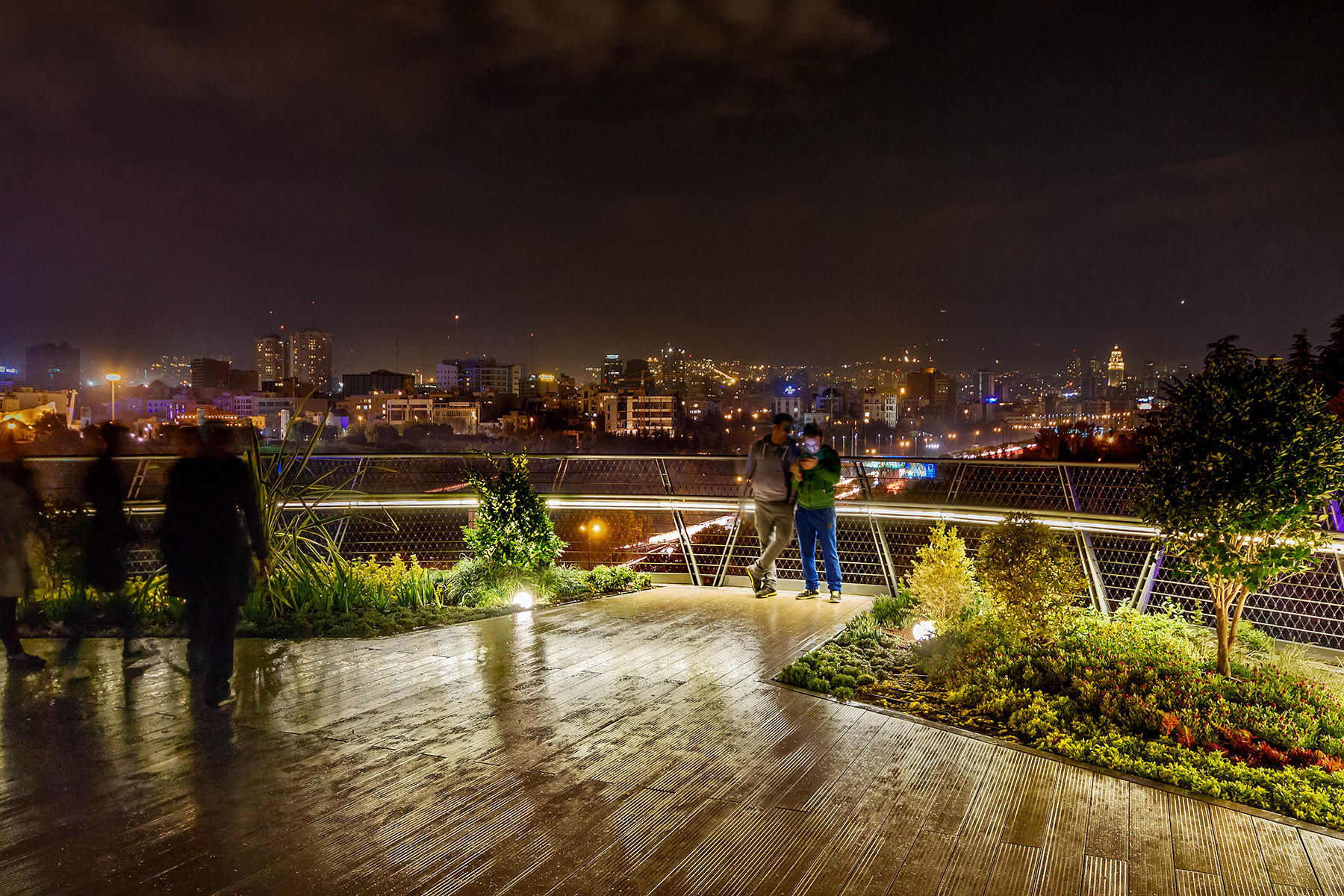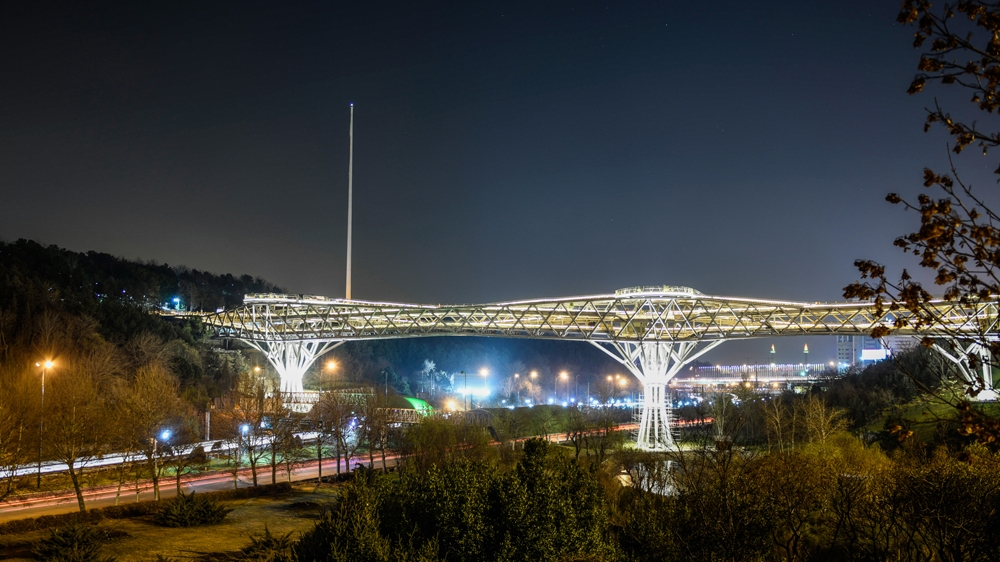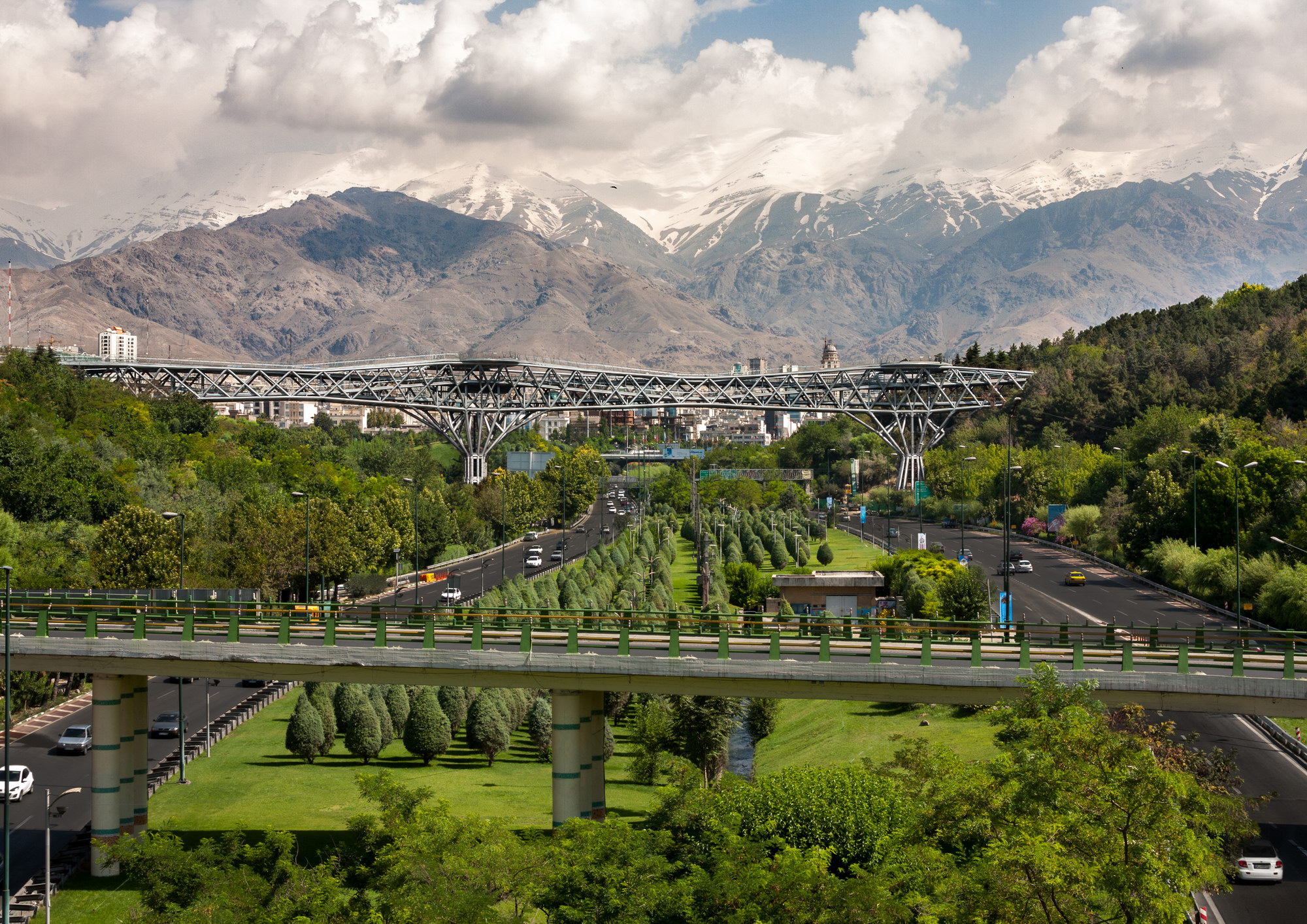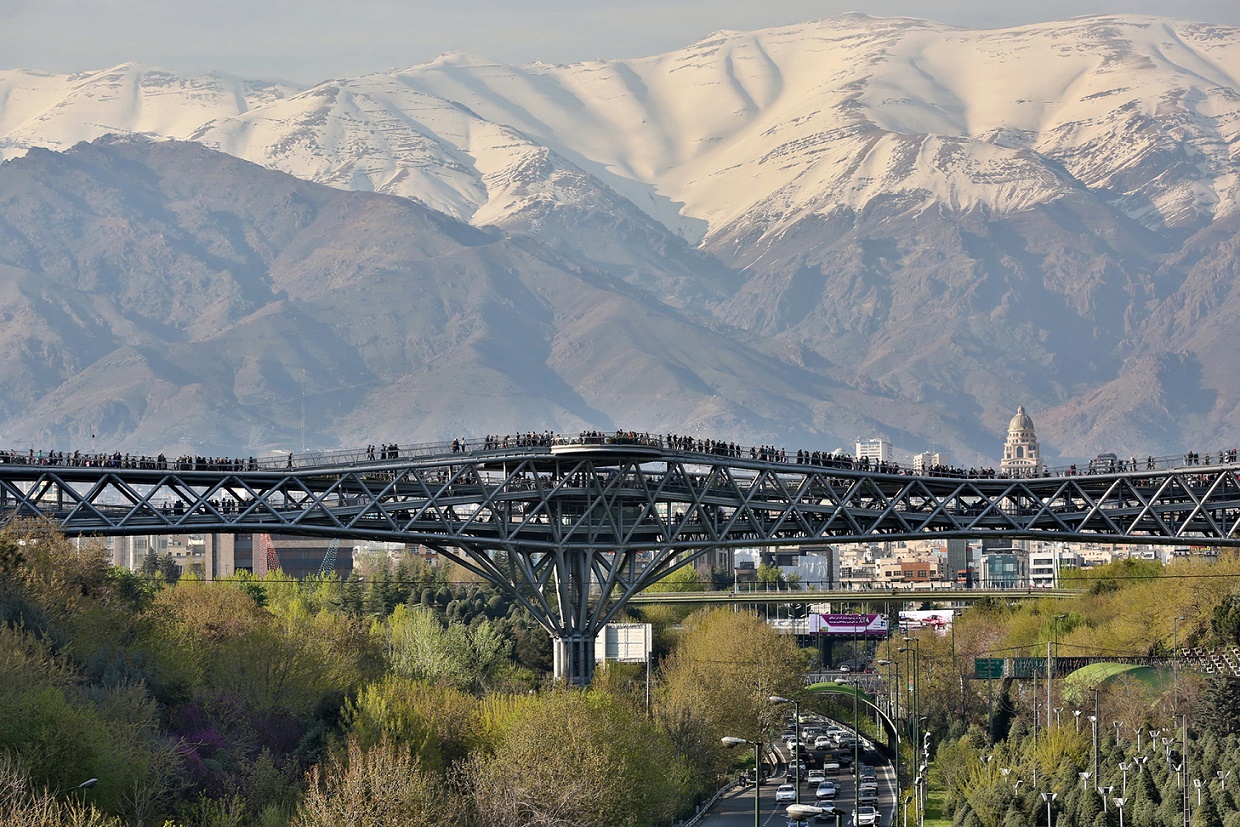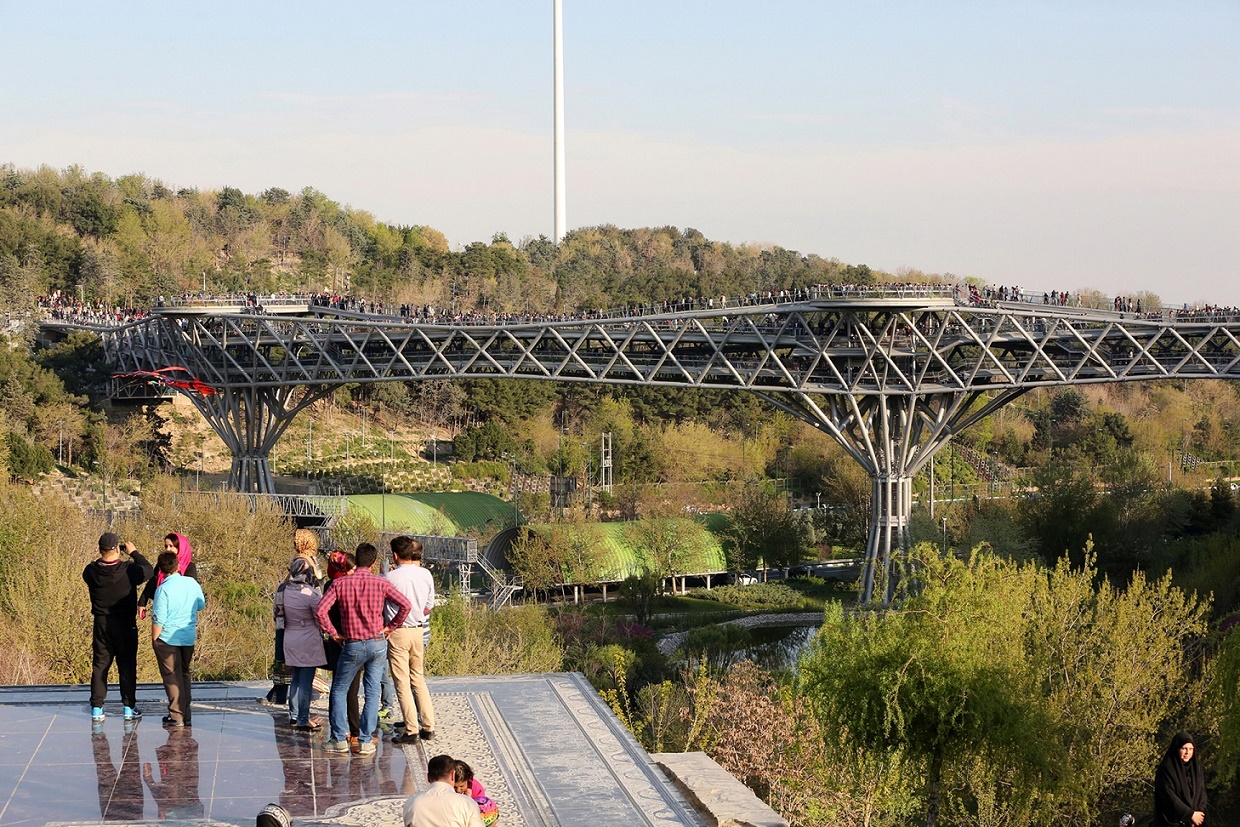Tabiat Bridge - Tourist Attractions - Karoon hotel 3-star Tehran Iran
Access routes from karoon hotel:
- via Taxi about 8 - 16 min (Recommended)
- via BRT (Bus Rapid Transit) 15 min + by walking 13 min (1.1 km)
- via Metro 12 min (5 stations) + by walking 15 min(1.2 km)
The Nature Bridge or Tabiat Bridge (Persian: Pol-e Tabi'at) is the largest pedestrian overpass built in Tehran, Iran. The 270-metre (890 ft) bridge connects two public parks—Taleghani Park and Abo-Atash Park—by spanning Modarres Expressway, one of the main highways in northern Tehran. The word tabiat means "nature" in the Persian language. The bridge was designed by Leila Araghian. It has won several awards, including the Popular Choice Prize for Highways & Bridges from the Architizer A+ Awards, a global architectural competition based in New York.[1]
Tabiat Bridge was designed by Leila Araghian as part of a local competition for the design of a bridge to connect two parks in north Tehran which were separated by a highway.In designing the bridge, a process which took a total of a year, Araghian wanted it to "be a place for people to stay and ponder, not simply pass."[5] To achieve this the bridge is not straight and contains benches and seating.[4]
Construction of the bridge started in 2010, using a total of 2000 tonnes of steel and 10000 cubic metres of concrete before it was finished in October 2014.[4] Construction of the bridge over a large highway was described as a big challenge, with platforms and temporary tunnels built to ensure that nothing fell onto the road below.[1]
Infrastructure that connects two parks has become a popular urban space. The architects first conceived the two-to-three level, 270-metre-long curved pedestrian bridge of varying width, a complex steel structure featuring a dynamic three-dimensional truss with two continuous deck levels that sits on three tree shape columns, with a third where the truss meets the column branches.
It was an imaginative leap beyond the basic competition brief of designing a bridge to connect two parks separated by a highway in northern Tehran, without blocking the view to the Alborz Mountains. The structural elements are based on a latent geometrical order rotated and repeated in three dimensions. The result is a spatial structure large enough to create an inhabitable architectural space, where people congregate, eat and rest rather than just pass through.
Multiple paths in each park were created that would lead people on to the bridge. Seating, green spaces and kiosks encourage people to linger on a site where greenery has been preserved by the minimal footprint of the bridge, whose curve offers a variety of viewing perspectives. [10]



